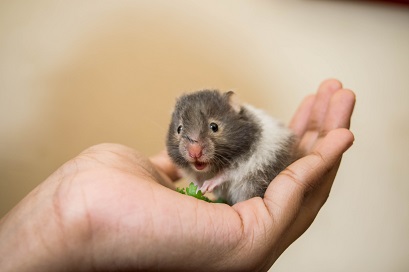Escaping from their cages is a natural instinct for inquisitive and agile creatures like hamsters. As responsible pet owners, it is our responsibility to create a secure and escape-proof environment for our furry friends.
This comprehensive guide offers practical tips and measures to prevent hamster escapes and ensure their safety.

Measures
In this part, you will get the knowledge of 10 measures for preventing hamster escapes from hamster cages.
Choose an Appropriate Cage
Select a cage with appropriate bar spacing to prevent your hamster from squeezing through. The recommended bar spacing for most hamsters is about 1/2 inch (1.3 centimeters). Additionally, opt for a cage with a secure and reliable locking mechanism.
Regular Cage Maintenance
Check the cage regularly for any signs of wear and tear, including loose bars or damaged latches. Ensure that the cage is in good condition to prevent any potential escape routes.
Close All Openings
Inspect the cage for any gaps or openings through which your hamster might escape. Seal any small holes or crevices with appropriate materials, such as sturdy tape or mesh.
Secure Cage Accessories
Securely fasten all accessories, such as water bottles, food dishes, and toys, to the inside of the cage. Hamsters are expert climbers and might use these objects as stepping stones to reach the top of the cage.
Avoid Placing Near Hazards
Position the cage away from potential hazards, such as open windows, doors, or air vents. Even with a secure cage, accidents can happen if a curious hamster finds its way into unsafe areas.
Monitor Climbable Surfaces
Check the surroundings of the cage for any items or furniture that your hamster can climb on to reach higher areas. Keep these items at a safe distance from the cage to prevent escapes.
Use a Secure Lid
If your hamster’s cage has a lid, ensure that it is securely fastened and cannot be lifted easily. Consider using a lid with a locking mechanism for added security.
Handle with Care
Be gentle and cautious when handling your hamster, especially during playtime outside the cage. Sudden movements or rough handling might startle your pet and lead to accidental escapes.
Supervise Playtime
During supervised play sessions outside the cage, provide a safe and confined space for your hamster to explore. Use hamster playpens or enclosures to prevent accidental escapes.
Train Recall
You can train your hamster to come to you when called by offering treats or rewards. This can be helpful during playtime to ensure your pet stays close and doesn’t wander too far.

Conclusion
Preventing hamster escapes requires vigilance, proper cage maintenance, and a secure environment. By following these practical tips and measures, you can ensure the safety and well-being of your furry friend. A secure cage, careful monitoring, and responsible handling will help to create a happy and escape-free environment for your beloved hamster.
Remember, providing a safe and secure habitat is a crucial aspect of responsible pet ownership and will lead to a harmonious and enjoyable relationship with your furry companion.
 Abraham
Abraham